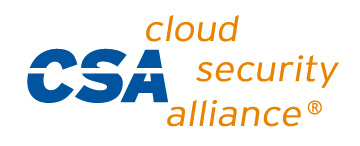
A New Dawn for HR
The talent landscape is changing rapidly: employees are re-evaluating their career choices, businesses are struggling to fill myriad open positions, and more workplaces are shifting to hybrid — if not fully remote — models. HR leaders are at the epicenter of this change, responsible for keeping their employees happy and their companies afloat. But are they truly ready to embrace what many are calling “The Golden Age of HR”? Mark Brooks-Lewis, founder of global HR and tech marketplace LavaSourceHR, joined last week’s Talent Experience Live to discuss how HR leaders and their teams can better equip themselves for this transformation. Watch the full episode here, or read the summary below. Too often, the business models for most human resource teams come from thought leaders who have never actually worked in HR or experienced the day-to-day pressures that the job entails. As a result, these business models are static, forcing HR teams to be reactive rather than proactive. HR teams work tirelessly to help the company succeed, but often forget to help themselves. Brooks-Lewis explains: “We are the perennial people on a plane that are putting everybody else’s masks on to get oxygen, and we think we need to put on ours last. We can't let burnout allow HR teams to get stuck in the proverbial hamster wheel,” Brooks-Lewis stresses. So what can businesses do moving forward? Learn More: Getting Started with an Internal Talent Marketplace & Gigs Ultimately, forging ahead successfully is all about leadership. Typically, having a strong CHRO who’s already at the top table is a great asset. As Brooks-Lewis put it: “Where there’s been a strong, healthy C-suite that has a strong CHRO, they’ve come through these last two years… in reasonable health.” In contrast, organizations without solid leadership to guide and support them are struggling, failing to recognize what needs to change and why competitors are pushing ahead. Historically, the concept of C-Suite incorporating HR has been linked to the strength of an HR leader rather than the business model. “It shouldn’t be that way,” Brooks-Lewis notes. “It should work in every organization.” Brooks-Lewis founded LavaSourceHR, an open talent marketplace, because he was experiencing many of the same challenges while working in HR. At the time, he was running multiple programs but was having difficulty finding the right resources. This highlighted the need for a community-centric, vertical marketplace, where it’d be easier to find like-minded people. Open talent marketplaces simplify finding qualified professionals who may already be in your geographic location and can be sent on your company’s behalf. Their talent adds value to your organization, for a fraction of the time and cost. The current talent market poses some big challenges. With hundreds of open HR recs to fill and only a certain number of qualified professionals available, there’s only so much HR teams can handle before hitting a breaking point. Despite the relief that open marketplaces offer, there is still resistance. Why? “Any type of change of this significance makes everyone feel uncomfortable — we are human beings and change takes time to get used to,” Brooks-Lewis explains. Although his platform is mostly self-service, he and his team often have conversations with organizations around compliance and taxes, reassuring them that an open model is just as effective, if not more so. Recruiters are busier than ever, so it’s no wonder they tend to reach for what Brooks-Lewis calls “low-hanging fruit,” the same talent from the same small pool. An open marketplace transforms that pool into an ocean, not only making roles easier to fill, but allowing companies to focus on diversity and inclusivity. As he points out, leveraging technology to automate some of the everyday processes allows teams to work more effectively, freeing up time for what is truly important. Diverse talent may involve implementing accommodations, like a flexible work schedule for a single parent or a special keyboard for someone with a disability. Great candidates may be on the job market thinking they need to fit within a certain criteria to be considered by an organization. But by embracing change and being open to accommodating specific needs, companies can attract more talent. A diverse workforce will not only add fresh perspectives, but ultimately build stronger teams, affording organizations the ability to finally “walk the walk” when it comes to their DE&I goals. “Practice what you preach,” Brooks-Lewis concludes. For HR teams to be free from burnout, they must do for themselves what they have been tirelessly doing for others. Don't shy away from hard conversations with your company’s decision-makers. Start implementing changes to move towards a brighter future — today. Catch Talent Experience Live every Thursday at noon EST on LinkedIn, YouTube, or Facebook — follow & subscribe to the Phenom channels for news and updates.
A Proactive Business Model
Leveraging Strong Leadership
Related: How Kuehne+Nagel is Accelerating Internal Sourcing with a Talent Marketplace
Creating an Agile Workforce
Learn more: The Gig Is Up: How to Launch a Successful Internal Talent Marketplace
Resistance To Change
An Open Marketplace Provides Diversity
See how Phenom can help your HR teams
Get the latest talent experience insights delivered to your inbox.
Sign up to the Phenom email list for weekly updates!









